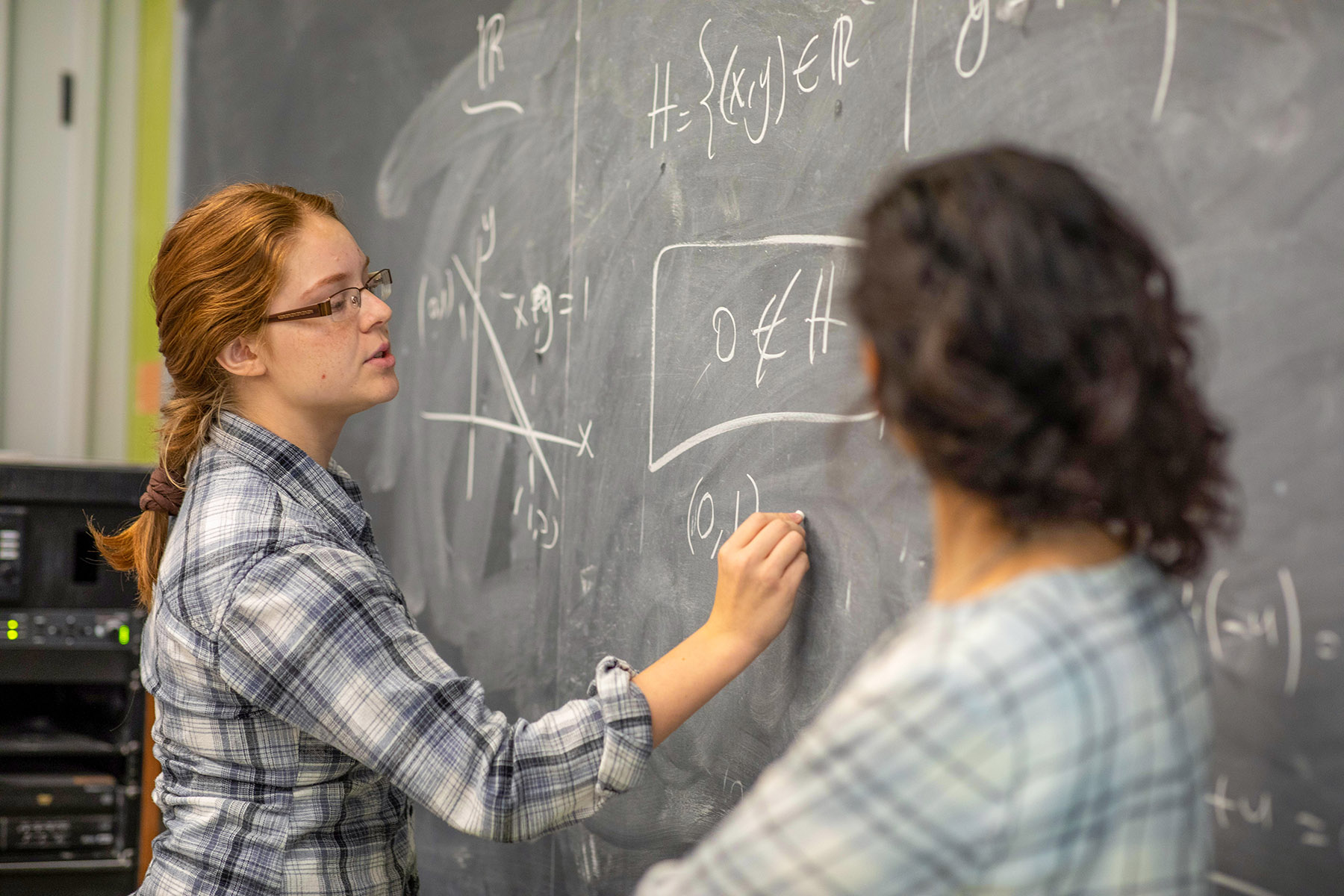Coordinated Calculus Inspires Change
Author: Lona

Author: Lona

BY ANGIE HAGERTY
Large lecture math courses are being taught with an improved format to foster student success
Positive student feedback and satisfaction with coordinated calculus—a fresh and innovative approach to teaching undergraduate calculus—has sparked the mathematics department to expand its lineup of coordinated course offerings.
Revamped and redesigned with student success in mind, the coordinated model provides flexible ways for students to learn, study and collaborate with their peers and professors.
“Iowa State is transforming how our students learn math,” said Hal Schenck, professor and chair of the Department of Mathematics. “Lecture attendance and student engagement have increased since implementing coordinated calculus.”
The main differential equations course is currently transitioning to the coordinated format, starting with common exams this fall. Efforts to coordinate the matrices and linear algebra course are in the planning stages, with limited rollouts slated for spring 2020.
Before the debut of coordinated calculus, Iowa State’s STEM calculus sequence—Math 165, Math 166 and Math 265—was taught using standard methods.
“Iowa State calculus classes operated as most college calculus classes across the country operate, within a traditional model that included little to no synchronization between the instructors leading the sections,” Schenck said. “Also, our calculus exams and quizzes varied across the sections and each instructor used different metrics for determining grades.”
He envisioned something bigger, bolder and better for Iowa State students.
“I knew we could offer many improvements that would enrich student learning in these large lecture math classes,” Schenck said.
Every semester, thousands of Iowa State students register for one of the three STEM calculus classes, making calculus the highest enrollment class at the university. Students must pass these courses before they’re allowed to register for advanced engineering or science courses.
“Succeeding in calculus is the price of admission if you want to study engineering at ISU,” said Haadi Majeed (‘22 computer engineering), who took first semester calculus his freshman year. “I knew calculus was going to be extremely tough, and I also knew that I had to do well.”
The planning for and development of Coordinated Calculus began in 2017. Schenck tapped Steve Butler to manage the ambitious effort of coordinating more than 100 calculus sections in time for fall semester 2018.
Butler, associate professor and Barbara J. Janson Professor in the Department of Mathematics, began by piloting the coordination model with a small cohort of third semester calculus classes that were taught by Butler, Schenck and other instructors.
The limited launch generated a surge of positive student feedback. In response, Butler expanded the unified curricula across all sections in each of the three STEM-calculus courses.
“The scope of this project was considerable, but well worth the time and effort,” Butler said.
The centerpiece of coordinated math classes is customized curricula and lecture material that is synchronized across all sections of each class. Although there are multiple instructors who teach with their own presentation style, they all follow a common syllabus. All students are assigned the same quizzes, tests and homework.
“If I oversleep and miss a morning calculus lecture, it’s no longer the end of the world, and I don’t have to borrow notes from a friend,” Majeed said. “I can join an afternoon section because every lecture that day covers the same content. It’s unbelievably convenient.”
It turns out that unifying thousands of calculus students on the same wavelength fueled student-driven collaborations that extended far beyond the classroom.
Study groups, creative-cram sessions, movie nights and calculus problem-solving salons spun up across campus, as students devised clever ways to conquer college calculus.
“The computer and software engineering majors on my dorm floor formed calculus study groups,” Majeed said. “We created a calculus community and now we work on homework and review lecture material together,” Majeed said.
To foster more student collaboration, Butler recorded a complete set of his lectures for the three-semester calculus sequence. He uploaded the videos to YouTube, where they are available to the public.
“The night before the final, we checked out a projector from the dorm office and organized a ‘movie night with Steve Butler’,” Majeed said. “We fast forwarded to the exact problems and content that we needed to review for the test.”
Coordinated math classes also feature a supersized version of traditional office hours. The rebranded “calculus help hours” feature a rotation of instructors which is available nearly 40 hours every week to help students study, review lecture material or solve grueling homework problems.
Starting in the fall, more of the tenure-track faculty will lecture and maintain office hours for coordinated courses, enabling students to learn from more top instructors.
Amy Phan (‘20 child, adult and family services) credits calculus help hours with her accomplishments in Math 165 and 166.
“I was able to find help anytime I needed it,” Phan said. “There were often 10 students crammed into Steve Butler’s office, gathered around white boards, working through calculus problems and helping each other.”
“By the middle of the year, Amy was tutoring other students,” Butler said. “This is what the coordinated program is about—providing the structure and the tools to help students learn, solve problems and become critical thinkers.”
The benefits of coordinated calculus have triggered a coordination revolution, of sorts, in the mathematics department.
“When lecture attendance spiked and class participation increased, we knew we had to coordinate other courses,” Schenck said.
According to a recent survey conducted by the math department, 92% of student respondents reported regularly attending their calculus lectures.
“The coordinated model has changed the way Iowa State students learn calculus and we’re excited about spreading those positive impacts to other math classes,” Schenck said. “It’s absolutely imperative that we give students a quality experience. We want them equipped with the quantitative skills that are needed to compete in a global marketplace.”